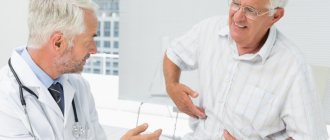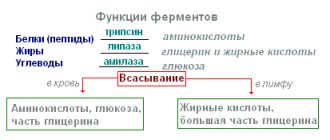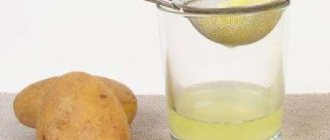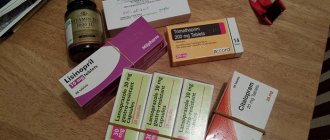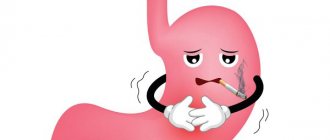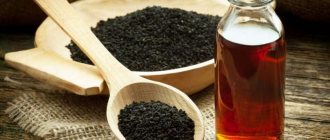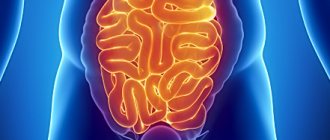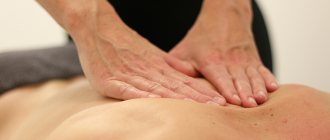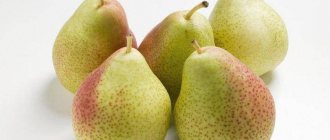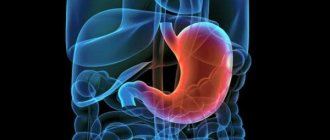What is physiotherapy
Treatment of any disease should not only be effective, but also as safe as possible, without unpleasant consequences or side effects. “Do no harm” is precisely the principle on which all modern medical techniques are based. Physiotherapy is one of the long-known, absolutely safe, and therefore extremely popular techniques.
The name physiotherapy itself suggests that treatment is carried out using physical factors affecting the patient’s body.
The main feature, or rather, the advantage of the technique is that this course of treatment eliminates the use of chemicals and drugs. The name physiotherapy itself suggests that treatment is carried out using physical factors affecting the patient’s body. There are many such physical factors - ultrasound, currents, lasers, magnetic fields, various types of radiation (ultraviolet, infrared), massage and others.
Physiotherapy awakens the body's internal reserves, strengthens the immune system and thereby shortens the treatment time, accelerates the healing of wounds and inflammation, activates the most important biochemical processes in the body, tuning the body's natural forces for recovery. As an independent method of treatment, physiotherapy is effective in the initial stages of the disease. Physiotherapy is an excellent means of preventing many diseases. Most often it is used as an additional method in the general course of treatment.
Physiotherapy is prescribed to each patient strictly according to individual indications, since the nature of the disease, its stage, the person’s age and other factors play a role. The occurrence of side effects after the use of physiotherapeutic techniques is practically excluded. Often, physical therapy helps to cope with diseases that have long been resistant to treatment using traditional methods.
All physiotherapy procedures for gastritis are carried out exclusively during the period of remission of the chronic form or subsidence of the acute process of the disease
Physiotherapy for gastritis
As you know, with chronic gastritis, the patient experiences severe pain in the stomach. In order to relieve pain, doctors advise attending physical therapy. In addition, this procedure affects the motor and secretory functions of an organ such as the stomach, and it also helps stimulate the regeneration of the gastric mucosa.
When complex treatment is carried out in a hospital, the following factors of this procedure are used:
- ultrasound therapy;
- galvanization and medicinal electrophoresis;
- dynamic currents;
- inductothermy (with reduced secretion);
- sinusoidally modulated by currents (with increased secretion);
- balneotherapy (ingestion of mineral waters and various waters).
Let us clarify that all physiotherapy procedures for gastritis are carried out exclusively during the period of remission of the chronic form or subsidence of the acute process of the disease. In order to stabilize the nervous system, balneotherapy is used, during which the doctor prescribes coniferous, herbal, radon, mineral and coniferous-radon.
Briefly about the features of the disease
Erosive gastritis, among lesions of the digestive organs, is indicated by inflammation of the mucous membrane in the stomach, with periodically occurring erosions that tend to merge. The disease can be acute or chronic. The characteristics of the course of the disease depend on the causative factors and the susceptibility of the body.
Against the background of the action of aggressive substances of exo- and endogenous origin, inflammation primarily starts in the mucous membrane of the organ. Over time, the barrier properties of the epithelium weaken and erosions occur.
The danger of this form is that in the absence of intervention in the early stages of the disease, the formation of erosive defects accelerates with a tendency to merge. All these processes thin the lining of the organ and ultimately lead to gastric bleeding of varying severity. Prolonged initiation of the pathological process can lead to death.
The doctor gives a prognosis for whether erosive gastritis can be cured forever in an individual case. Therefore, it is important to contact a specialist as early as possible, who will prescribe a comprehensive treatment plan.
Physiotherapy for gastritis
Physiotherapy is a separate field of medicine that provides the opportunity to treat and prevent diseases through the use of natural and physical factors. Instead of chemical drugs, mineral waters, currents, magnetic fields, laser quanta, ultrasonic waves, cold and other transdermal, local effects are used.
Physiotherapy is selected by the doctor individually, depending on the type and nature of gastritis. It is known that the chronic form of inflammation is of types A, B, C. The choice of technique will be influenced by the reasons that caused the disease and the disruption of the secretory function of the organ.
For gastritis, complex physiotherapeutic treatment is prescribed. Physiotherapy, regardless of the method used, is carried out in the remission stage of chronic gastritis or in the subsiding phase of acute inflammation.
There are a large number of techniques used in the field of gastritis physiotherapy, each of which has its own characteristics and focus:
- secretocorrective physiotherapy: physiotherapy in this group includes exposure to hydrocarbonate-chloride mineral waters with sodium and calcium and magnetic therapy using high-frequency currents;
- high-frequency magnetic therapy: the essence of the technique is local physiotherapy on the epigastrium with weak heat for 15-20 minutes every day. Duration of physiotherapy – 10-15 sessions;
- vegetocorrective physiotherapy : a group of methods using natural factors of beneficial effects;
- anti-inflammatory physiotherapy: the essence of this group of methods is to relieve inflammation from irritated mucosal walls that suffer from the effects of acidic gastric contents;
- reparative and regenerative physiotherapy: a group of techniques aimed at healing wounds in the mucous membranes of the inflamed stomach during gastritis. To achieve this, restoration and regeneration processes are stimulated at the tissue and cellular level;
- paraffin therapy: the essence is skin application of warm paraffin to transfer heat to tissues;
- sedatives: aimed at normalizing the general condition of the nervous system of a patient with gastritis. Physiotherapy is based on taking soothing baths at 36–37°C;
- immunomodulatory therapy: used to increase local immunity and body resistance in gastritis.
Treatment methods for focal gastritis
Treatment of focal disease requires an integrated approach. Without quality treatment and strict adherence to the doctor’s recommendations, it is impossible to get rid of the disease. Therapy includes: taking medications, constantly following a diet, taking courses of physiotherapy if possible, increasing physical activity and using traditional recipes in remission.
Diet for focal gastritis
For therapy, a treatment table is prescribed, which imposes a complete ban on spicy foods, too salty dishes and pickled vegetables. Sweet pastries are prohibited, and citrus fruits and juices from them are in the acute stage. No one should eat strong tea and coffee, fatty meat, alcohol, or fried foods if they have gastritis.
Products that have a positive effect on health include: fermented milk drinks, cottage cheese, sour cream, boiled vegetables, lean protein and eggs, berries and non-acidic fruits, cereals, olive oil and up to 10 g per day of butter.
In case of exacerbation of focal gastritis, food is ground, fresh fruits and vegetables are excluded from the menu until the symptoms of the disease are smoothed out.
Drug treatment
Taking medications is necessary in the treatment of focal gastritis, but a doctor can prescribe them - independent use will lead to a deterioration in health. The following groups of funds are used:
- antispasmodics such as “No-Shpy”;
- means that improve motor skills - “Motilium”, “Cerucala”;
- agents that increase the production of gastric juice;
- Mezim type enzymes;
- means for reducing acidity - “Omezom”, “Ranitidine”;
- antibiotics to suppress the activity of Helicobacter pylori.
Probiotics are also prescribed, which protect the body from the effects of antibacterial substances. Be sure to use vitamins and complexes that increase immunity.
Traditional therapy methods
To treat focal gastritis, such effective remedies as sea buckthorn oil, decoction of flax and oat seeds, plantain, cabbage or potato juice are used. Your doctor will help you accurately determine the appropriate prescription.
Physiotherapy for the treatment of gastritis
Physiotherapeutic procedures are very effective in the fight against focal gastritis:
- Secretocorrective. They help restore the acidity of the stomach: magnetic therapy, the use of mineral waters internally and as baths.
- Vegetocorrecting. These procedures improve the condition of the body and the central nervous system. Aerotherapy is used.
- Anti-inflammatory. They use cryotherapy and UHF methods.
- Reparative-regenerative. These methods stimulate the healing of wounds on the mucous membrane. They use ultrasound, peloid therapy - mud applications on the back and abdomen.
- Antispasmodic. The most effective method is electrophoresis with drugs.
- Immunostimulating. This category includes SMV therapy (exposure to heat), laser therapy and magnetic therapy of the thymus.
Paraffin therapy and bathing with soothing infusions are also used. Physiotherapeutic treatment is highly effective, but requires long courses of implementation. The dosage and type of treatment are selected by the doctor.
Treatment of gastritis with physiotherapy
There are many methods of physiotherapy that can both alleviate the patient’s condition with gastritis and speed up recovery after acute manifestations subside. To prevent exacerbations in the quiet period, various baths are used (coniferous, pearl, oxygen, radon), thermal procedures on the epigastric region (paraffin, ozokerite, mud applications). However, the use of these physiotherapeutic agents is possible only in a hospital or clinic.
At home, in the acute period, you can use light heat in the form of warming semi-alcohol compresses on the epigastric region. These compresses cause dilation of superficial blood vessels, which increases the flow of blood to the site of damage or inflammation. As a result, the inflammatory focus of the underlying tissues resolves and pain decreases.
To apply a warming compress, you should moisten the cloth with a solution of alcohol diluted 2 times (45–48%) and wring it out well, apply the moistened cloth to the sore spot, put compress paper on top of the cloth, a couple of layers of cotton wool can be placed on it, so that each subsequent layer is larger than the previous one, then carefully bandage it to the stomach.
There are many methods of physiotherapy that can alleviate the condition of a patient with gastritis.
The application time of the compress should be no more than 12 hours (until it dries), and if the fabric dries out earlier, the compress should be removed. To change the compress to a new one, you need to wash the place where it was with water, and not irritate the skin. Instead of ethyl alcohol diluted 2 times, you can use vodka, salicylic or camphor alcohol, or cologne diluted with water.
In the subacute period and outside of exacerbation, various applications and baths can be done at home. In addition, 2–3 months after an exacerbation, sanatorium-resort treatment is possible, including mud and peat therapy, pine-sea baths, taking alkaline mineral waters and other therapeutic measures in such sanatoriums as Dorokhovo, Zheleznovodsk, Essentuki, and the like .
Treatment of gastritis with physiotherapy in children
Physiotherapy for gastritis in children is widely used and various techniques are used. For pain syndromes, the use of ultrasound or helium-neon laser in the projection of the epigastrium, EHF therapy is indicated. As the process subsides, electrosleep or electrophoresis with B vitamins, novocaine, zinc or platiphylline can be used; it is carried out in the epigastric projection.
After the second week of exacerbation, UHF therapy or modulated current can be used, as the process subsides, mud procedures, ozokerite therapy. Additional non-drug therapy includes: a course of mineral waters without gas and warm - Borjomi, Essentuki - 4th or 17th, Slavyanovskaya, taking up to 150 ml in courses of up to 40 days, repeating courses up to three times a year.
Physiotherapeutic methods
Electrosleep can be used in complex therapy of the disease.
For gastritis, a doctor may prescribe the following procedures:
- Vegetocorrective: electrosleep therapy;
- electroanalgesia;
- aerotherapy.
- UHF;
- laser treatment;
- paraffin therapy;
- pine and nitrogen baths;
- balneotherapy;
- ILBI;
Electrophoresis
Papaverine solution is used as an antispasmodic during the procedure.
50-100 ml of 0.25-0.5% novocaine solution is used as an antispasmodic. Galvanization of the stomach area is performed at current parameters of 0.05 mA/sq.cm. To enhance the antispasmodic effect, add 2 ml of a 2% solution of papaverine or 10 drops of 0.1% atropine. It has a vasoactive and antispasmodic effect on the neuromuscular connections of the damaged area. The session lasts 16-20 minutes. Electrophoresis is carried out every day or once every 2 days. The duration of the physiotherapy course is 10-15 sessions.
Immunomodulation
Treatment methods are presented in the table:
| Procedure | Features of the event | Course duration |
| SMV therapy | Low frequency exposure to low heat | 5-6 sessions of 10 minutes every other day |
| Thymus magnetotherapy | Action with high frequency current 27.12 MHz and 13.56 | 10-12 procedures for 9-10 minutes every other day |
| ILBI - laser blood irradiation | Intravenous administration of a component for laser quantum irradiation | 7-10 sessions with a break of six months |
Magnetotherapy
A course of magnetic therapy may require up to 15 sessions.
Through high-frequency magnetotherapeutic effects, eddy currents are formed in the gastric mucosa. As a result, arterioles, capillaries, venules expand, microcirculation and metabolism increase. In the inflamed area, tissue swelling and leukocyte activity are reduced, and regeneration processes are activated. It has an antispasmodic effect, the tone in smooth muscle fibers decreases, and the kinetic functions of the gastrointestinal tract and secretion are restored. The effect occurs over 15-20 minutes. The physiotherapeutic course consists of 10-15 sessions every day.
Ultrasound
The treatment course is 10-12 sessions every other day. Before the procedure, you need to drink an infusion of medicinal herbs, diluted with water to 0.5 liters or the same amount of water. This is necessary to push the air back and move closer to the abdominal region of the stomach. The therapy relieves pain and has a positive trophic effect. The impact is carried out on the epigastric region at an intensity of 0.4-0.6 W/sq.cm for 5 minutes. In addition, ultrasound acts on the paravertebral areas on both sides at the level of the 9th thoracic vertebra, at rates of 0.2-0.3 W/sq.cm. The duration of exposure is 3 minutes.
Vegetative-corrective methods
Physiotherapeutic techniques are presented in the table:
| Procedure | Features of the event |
| Aerotherapy | Exposure to open spaces with air for 10-15 sessions |
| Electrosleep therapy | Action on brain tissue with a duration of 0.2-2 ms of currents of 2-3 mA, with a frequency of 3-140 Hz |
| Electrical stimulation | Impact of low-frequency pulse currents on the autonomic centers and cerebral cortex |
Cryotherapy
The procedure can be carried out using liquid nitrogen.
The skin in the area of the inflamed organ is cooled at temperatures from +3 to -170 °C. Session duration is from 10 seconds. up to 6 min. Nitrogen cryotherapy is most often used. As a result, the affected area is anesthetized for up to 6 hours, swelling is eliminated, blood and lymph flow is stabilized, tissue regeneration processes are stimulated, and the immune system is activated.
UHF for gastritis
A mild ultra-high frequency electric field is applied. When placing capacitor plates, an air gap of 4 cm is used. The technique can be used during acute periods and exacerbations of gastritis. The daily duration of physiotherapy by exposure to a high-frequency electromagnetic field is 6-7 minutes. Duration of therapy - 3-5 sessions
Peloid therapy
Mud applications are applied to the abdomen and back. For physiotherapy, silt mud is used, which is heated to 37-40 degrees C, or a peat product with a temperature of up to 43 ° C. Treatment is carried out once every 2-3 days, 12-15 procedures are required. The duration of sessions with silt mud is 16-20 minutes. Duration of the procedure with peat 27-30 minutes:
Paraffin therapy
To carry out the procedure, the substance is heated.
Warm paraffin wax applications are applied to the surface of the skin to transfer heat to the tissues. Paraffin is heated to 50 degrees C. Duration - 16-20 minutes. Therapy is carried out every day or once every 2 days, 10-15 procedures are necessary. This allows you to achieve the following therapeutic effects:
- vasodilation;
- improvement of microcirculation;
- normalization of metabolism in tissues;
- acceleration of wound healing and scar resorption;
- reduction of spasms and pain.
Other techniques
For gastritis, mud baths are effective. You can use effective folk remedies for medicinal purposes. For example, pour 0.5 kg of sage into 5 liters of boiling water, leave for 3 hours. Then pour the medicine into a bath at a temperature of 36 degrees C. Therapy is carried out every other day. The duration of the course is 10 sessions of 10 minutes each. Ozone therapy is also an effective method for gastritis. The treatment promotes the restoration of tissues and cells of the body, has an anti-inflammatory and analgesic effect.
Physiotherapy for chronic gastritis
Chronic gastritis is a disease of the stomach in which disturbances in renewal (regeneration) and degeneration of epithelial cells occur in its mucous membrane, ultimately resulting in atrophy, which is accompanied by disruption of the secretory, motor and other functions of the stomach.
Physiotherapy for chronic gastritis is due to the possibility of pain relief, a targeted effect on the secretory and motor functions of the stomach, as well as stimulation of regeneration of the gastric mucosa. In cases of prolonged and severe pain and dyspeptic disorders, accompanied by loss of ability to work, treatment of patients with chronic gastritis is carried out in a hospital setting.
In the complex of therapeutic measures carried out in a hospital (hospital), the following methods (factors) of physiotherapy are used:
Physiotherapy for chronic gastritis is due to the possibility of relieving pain through a targeted effect on the secretory and motor functions of the stomach
- galvanization and medicinal electrophoresis;
- ultrasound therapy (for gastritis with preserved and increased secretion);
- exposure to diadynamic currents;
- exposure to sinusoidally modulated currents (for gastritis with increased secretion);
- DMV therapy (for gastritis with increased secretion);
- inductothermy (for gastritis with reduced secretion);
- laser (magnetic laser) therapy.
Treatment of patients with chronic gastritis with less pronounced symptoms of the disease in the vast majority of cases is carried out in an outpatient setting or at home. At the same time, the list of physical therapy methods is decreasing.
These include medicinal electrophoresis using the Elfor-I device (Elfor™), laser (magnetolaser) therapy and complex information-wave exposure using the Azor-IK device. The procedures used for the listed methods are similar to those for functional indigestion.
Rehabilitation for gastritis - basic approaches and methods
Gastritis is an inflammatory disease of the gastric mucosa. It can be acute and chronic. The causes of acute gastritis are the effects of a wide variety of factors: chemical, mechanical, thermal and bacterial, which cause damage to the gastric mucosa.
Also, gastritis can be either a primary disease in itself or a secondary one - as a consequence of a number of infectious and non-infectious diseases (as complications of severe infectious and somatic diseases, massive burns, acute renal failure, radiation injuries, etc.).
Chronic gastritis is a chronic, recurrent focal or diffuse inflammation of the gastric mucosa, prone to progression, development of atrophy, insufficiency of gland secretion and, as a consequence, digestive disorders.
The main causes and types of chronic gastritis are autoimmune gastritis, infectious (associated with the presence of bacteria in the stomach - Helicobacter pylori) and reactive gastritis (or chemical - due to the effects of medications - cytostatics, non-steroidal anti-inflammatory drugs, antibiotics) or with duodenogastric reflux (reflux of bile from the duodenum to the stomach). Depending on the causes and nature of the disease, rehabilitation for gastritis is developed.
General approaches to treatment and rehabilitation for gastritis
Treatment and rehabilitation for gastritis is complex. All activities include several stages:
- drug treatment. Aimed at relieving the inflammatory process, at the cause of inflammation.
- Therapeutic exercise (both at the outpatient stage and at the stage of sanatorium-resort treatment). There are no specific indications or directions. Enough walking, therapeutic exercises, and active sports games.
- Diet - therapeutic nutrition and strict regimen.
- Elimination of occupational and other hazards.
- Physiotherapy - electrophoresis of drugs, diathermy, mud therapy, hydrotherapy
- Local effect on the gastric mucosa.
Therapeutic exercise for chronic gastritis
During periods of exacerbation and pain, physical therapy is not prescribed. Immediately after the exacerbation is relieved, exercises for the abdominal muscles with a medium load are prescribed. In addition to them, walking in combination with breathing exercises is recommended.
In the hospital, a course of exercise therapy consisting of 10 - 12 sessions is carried out. A set of exercises is carried out one and a half to two hours before meals, as well as 20 minutes before drinking mineral water. Duration of classes is 20 - 25 minutes.
In addition to exercise therapy, segmental massage is effective for chronic gastritis. The effect is exerted on the paravertebral zones in the region of the 3rd - 8th cervical vertebrae. Course duration is 8 - 10 procedures. All of the above means of massage and physiotherapy are effective at a later stage of rehabilitation, and can also be carried out at the stage of outpatient observation.
Physiotherapy for chronic gastritis
Physiotherapy methods in the treatment and rehabilitation of gastritis have long proven their effectiveness and are successfully used in practice. Physical factors have a beneficial effect on the functional state of the stomach and duodenum.
The most commonly used physiotherapy methods include drug electrophoresis. In case of severe pain, electrophoresis with 1 or 2% novocaine solution is prescribed. In case of severe inflammation - electrophoresis of 2 - 5% calcium solution. The procedure takes 10-15 minutes, the current is 10 mA, a total of 10-12 procedures are prescribed per course.
Also, to reduce stomach pain, as well as to relieve dyspeptic disorders, diadynamic currents - DDT - are prescribed. The impact is on the area of the anterior abdominal wall. The duration of the procedure is 6 - 12 minutes, the current strength is 6 - 10 Ma.
Electrotherapy methods (especially pulsed currents DDT and SMT) help not only reduce pain. They also stimulate the secretory function of the stomach and promote an increase in the activity of food enzymes.
Effective methods are also the methods of DMV, SMV and IKV. As well as ultrasound treatment, although in practice these methods are used less frequently. When prescribing these techniques, it is necessary to take into account the level of secretion, and it is also advisable not to prescribe them during the period of exacerbation of the disease.
Separately, it is worth noting such an effective technique as laser therapy. The laser affects both locally, on the epigastric region, and on segmental zones.
Magnetic therapy has also proven its effectiveness and can be prescribed for the treatment and rehabilitation of stomach diseases. It is worth noting that this technique is the most “soft” and is well tolerated by patients. Also, when prescribing magnetic therapy, there is no need to take into account the level of secretory activity.
Natural healing factors and balneotherapy
One of the most effective natural factors in the treatment of gastritis is drinking mineral water. Mineral waters are selected according to the type of mineralization and the type of effect on secretion. For patients with high acidity, water is prescribed 60-90 minutes before meals, with normal levels 40-45 minutes. Dosage - 2 - 3 ml per 1 kg of body weight.
This is my traditional diet of mineral water. I try to stick to one bottle a day.
Patients with normal or high acidity levels should take mineral water heated.
With an increased level of secretion and acidity, low and moderately mineralized waters should be prescribed - sodium bicarbonate, sodium-calcium bicarbonate, magnesium-calcium.
Balneotherapy in the form of sodium chloride or sea baths with a mineralization of 20 - 30 g/l also has an effective effect.
An effective treatment method for inflammatory diseases of the stomach is mud therapy. Its use is advisable when the clinical picture is dominated by severe pain. Both silt and sapropel therapeutic mud are used.
Balneological procedures can be prescribed not only during the treatment of an exacerbation, but also in the form of prevention and at the secondary level of rehabilitation. It is worth considering that all of these methods are contraindicated in patients with polyposis of the gastric mucosa, as well as patients with rigid antral gastritis. The priority for such patients is treatment in gastroenterological sanatoriums.
Source: https://doktorkarasenko.ru/fizioterapiya/reabilitacija-pri-gastrite.html
Physiotherapy for acute gastritis
Treatment of acute gastritis includes an integrated approach and is not limited only to medications. First, the patient's stomach is cleansed.
Treatment of acute gastritis includes an integrated approach and is not limited only to medications
The first day, fasting with warm drinks is recommended, then liquid food (low-fat soups and broths, kefir) is added to the diet, then soft food (liquid porridge, soufflé, jelly), jelly, wheat crackers. After 5–7 days, you can switch to diet table No. 1.
With timely treatment of superficial gastritis, the disease subsides within a few days, and no complications are observed. But it takes at least two weeks to completely restore normal stomach function. Treatment for other types of gastritis takes longer.
An attack of acute gastritis is a signal that it is time to change your lifestyle, habits, and diet. Any treatment will be in vain if you do not follow simple but very effective rules. First of all, it is worth reconsidering the food culture. You need to eat 5-6 times a day, in small portions, evenly distributing meals throughout the day.
It is better to give up unhealthy foods, as well as too spicy, fatty, salty and smoked foods, drinking alcohol and smoking. But regular walks, balanced rest, oral hygiene and moderate exercise, on the contrary, will not only contribute to recovery, but will also reduce the likelihood of a new attack.
Symptoms of the disease
The main symptom of a peptic ulcer is pain in the epigastrium (the middle third of the upper abdomen) of an aching, dull, stabbing or cutting nature. Moreover, if the ulcer is localized in the stomach, it occurs 20-30 minutes after eating and is called early, and with a stomach ulcer, late or hungry pain occurs on an empty stomach - 6-7 hours after eating, and when food enters the patient’s stomach, pain gradually subsides.
Asthenic syndrome also occurs - general weakness, irritability, decreased appetite and performance, and weight loss.
Unfortunately, in recent years, the classic clinical picture of this disease is not always observed - in some patients it is asymptomatic - without a pronounced pain syndrome, while in others the pain is localized not in the epigastrium, but in other parts of the abdomen, which makes it difficult to make a diagnosis by referring a doctor on a false diagnostic path.
Rules for performing physiotherapeutic procedures
When using physiotherapeutic procedures, the possibilities of therapeutic effects are expanded, the duration of treatment is reduced, adverse allergic reactions of children are eliminated, the effect of medications is enhanced, while the therapeutic effects are painless and contribute to a longer preservation of the therapeutic effect.
Basic rules for performing physiotherapeutic procedures:
- Only one general procedure is allowed on one day, and the total number of procedures should be no more than three;
- procedures of the opposite effect are not combined on the same day; more than one procedure is not prescribed for one reflexogenic zone;
- do not combine the effects of physiotherapeutic factors with acupuncture on the same area;
- factors with similar effects (darsonvalization and ultratonotherapy) are not prescribed on the same day and to the same area;
- do not prescribe physiotherapeutic procedures on the same day as complex diagnostic tests;
- It is necessary to take into account that physical procedures can enhance the effect of certain medications and adjust the dose of the drug.
Any physical procedure for children begins with minimal dosages, gradually increasing the intensity to the required value.
When performing physical procedures, it is necessary to take into account a combination of physical factors. It is possible to repeat a course of physical treatment 1 to 6 months after the previous course, depending on the physical factor used, the individual characteristics of the patient and the type of disease.
Rules for performing physiotherapeutic procedures for children
Procedures should be taken no earlier than 1 hour after meals and 40 minutes before meals. It is also necessary to prepare the child psychologically and, if possible, explain the upcoming procedure. It is advisable to take one general procedure on one day; if necessary, you can take one local procedure, taking a break of 2 hours; Due to the longer aftereffect, children are prescribed longer intervals between courses.
Any physical procedure for children begins with minimal dosages, gradually increasing the intensity to the required value. Remember that it is necessary to constantly monitor the child’s condition, taking into account not only local reactions, but also changes in general well-being; procedures for young children are performed only in the presence of adults.
Sources:
- https://gastritinform.ru/tvoyzheludok.ru/gastrit/tradlechenie/fizioterapiya-pri-gastrite.html
- https://gastritinform.ru/www.medin.md/index.php/ru/fizioterapevticheskie-protsedury
- https://ilive.com.ua/health/fizioterapiya-pri-hronicheskom-gastrite_79690i16057.html
- https://zhkt.guru/gastrit/lechenie-5/terapiya-2
- https://gastritinform.ru/doclvs.ru/medpop4/fiziogastr.php
- https://gastritinform.ru/kir-obitel.ru/
- https://novomed-deti.ru/uslugi/phisio
